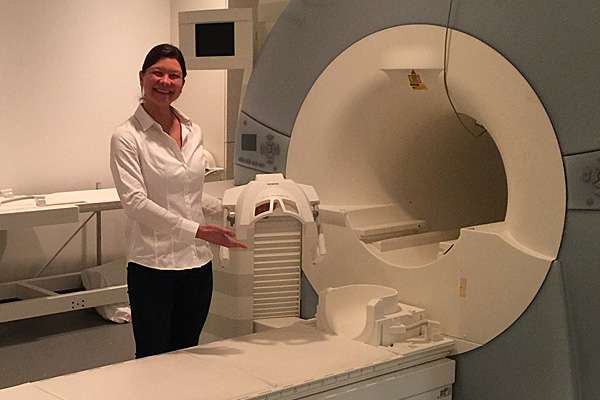An inside look at concussions

Queen's researchers examining the structural, functional changes to the brain caused by traumatic brain injuries.
With concussions in sport receiving increasing attention from athletes, sports fans and researchers alike, Queen's University post-doctoral researcher Clarisse Mark is at the leading edge in exploring the functional changes to the brain caused by injury.
A biomedical engineer by training, Dr. Mark saw the opportunity to expand her research focus from healthy young adults to study those with mild traumatic brain injuries or concussions. Using advanced Functional MRI – which examines brain activity overlaid onto structural features – Dr. Mark explores how patients are affected by concussions.
"With Functional MRI, we can look at which regions of the brain activate during certain tasks, how the brain vessels feed those regions and how they are interconnected, in addition to examining the structural components of the brain," says Dr. Mark
Along with her colleagues, Drs. Ingrid Johnsrude (Western), DJ Cook and Doug Munoz (Center for Neuroscience Studies), Dr. Mark developed a proposal for a nationwide collaboration to study concussion injuries in athletes and Canadian Armed Forces members.
Participants in the study take part in two activities, designed to examine how concussions affect skills such as memory, cognition, movement and balance. The first test, Dr. Mark's Functional MRI, consists of a memory test and a specialized breathing task – to measure blood flow in the brain—while inside an MRI scanner. Participants are also scanned while watching a short video clip.
The second activity, held on a subsequent day, involves performing a series of tasks on a specially-built robot called KINARM—the Kinesiological Instrument for Normal and Altered Reaching Movements. The tests measure the participant's speed, accuracy, reaction time, decision-making and balance.
Non-concussed "control" participants perform each task once. Participants suffering from a concussion undergo each test four times – as soon as possible after the injury, one week later, a couple months later and one year after the injury – to track changes in performance as the brain heals. The program has recruited seven concussed athletes to date.
"I'm very excited about our research so far," says Dr. Mark. "There is a lot of research into concussions taking place in the United States, but we are one of only a handful of researchers in Canada exploring the issue."


















